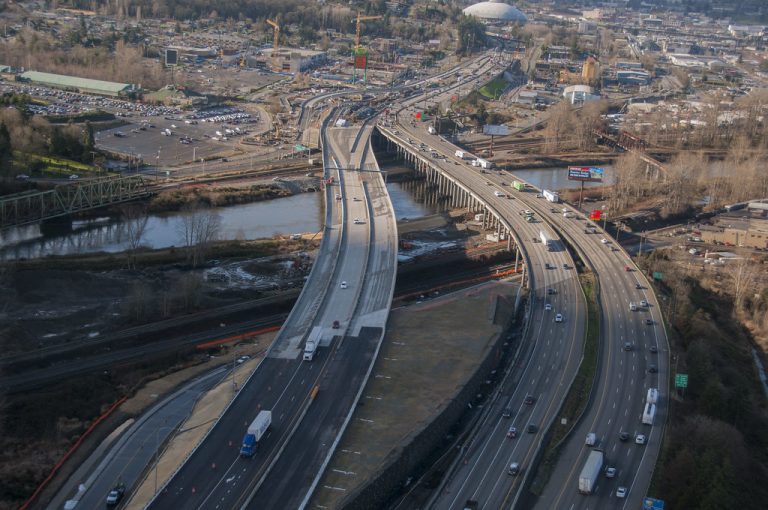Published on October 29, 2021

The infrastructure bill being hammered out in D.C. will fund a lot of road projects, including some in Washington State. But it’s difficult to reduce our carbon emissions when we keep building more highways. That’s what inspired a network of environmental groups to build a calculator that shows how much air pollution is caused by new roads.
Paulo Nunes-Ueno is with the Seattle-based group Front and Centered, which focuses on social justice for low-income and BIPOC communities. He said those communities needed a tool like this calculator to help them lobby for transit projects instead of roads.
“One in eight women in Washington state have asthma, one of the highest rates in the country,” he said. “And we need to start making those linkages, between the 50- or 60- or 70-year investments that we make in transportation infrastructure and our communities’ health. We can’t be doing this blindly anymore.”
The calculator is based on research out of the Institute for Transportation Studies at the University of California, Davis. The tool was originally built to analyze California projects, but the non-profit, Colorado-based Rocky Mountain Institute expanded the caluclator to cover all 50 states and released it this week. Front and Centered is promoting the tool’s use in Washington state.
Whether or not specific projects do in fact reduce pollution, researchers generally agree that in congested areas, building more lanes doesn’t make traffic problems go away. The reason is that new, empty traffic lanes inspire more people to drive. And so, gains in efficiency from reduced congestion — are quickly erased.
This principle is called “Latent Demand,” or “Induced Travel,” depending on which researcher you’re talking to. Or you could just call it the “if you build it, they will come” principle.
Mark Hallenbeck, director of the Washington State Transportation Center at the University of Washington, explains it like this: “In places where there is lots of congestion, people don’t find the activity they’d like to perform worth putting up with the traffic, so they don’t do it,” he said. “’I don’t want to go see the Mariners play, because traffic to downtown sucks!’ So they don’t go.”
Building a new road or a new train line makes it easier to get to the game, Hallenbeck said, “and they now choose to go do those activities.”
Hallenbeck wasn’t confident, however, that the calculator does enough to account for local variations. For example, if a road leads to a new park, or a new housing development, its lanes may quickly fill with traffic, but “building lanes in South Dakota or Nebraska will not generate the growth in vehicle miles traveled that their calculator predicts, because not enough people are interested in developing land in those areas.”
Continue reading at KUOW.
Originally written by Joshua McNichols for KUOW.